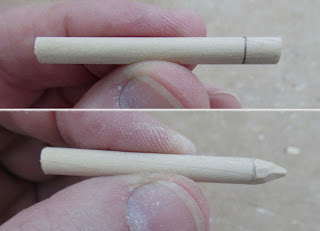"I’ve just completed my scratch-built Bulldog AGM 83 A and I thought some may enjoy seeing it. It’s a clone of an old Centuri kit that you don’t see very often. I did take liberties in creating an “eye” for the missile, so not wholly “as-in-reality,” but pretty cool in my estimation, nonetheless. I hope that you’ll still find it interesting!"
Here's the first listing from the 1982 Centuri catalog:
By the early 1980s, newer Centuri designs were using Estes parts. This rocket had a diameter of 2.217" or a BT-70. Quite a large model to use 18mm motors.
The Centuri kit nose cone had an extension card stock shroud like some of the Launch Pad kits.
To see the Centuri kit instructions, go to Jim Zs:




















































